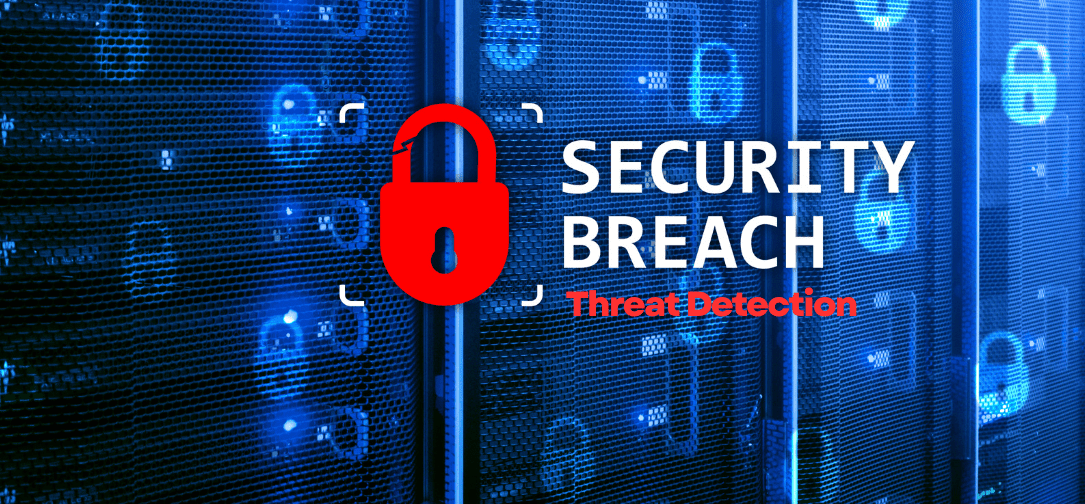Cyber threats evolve fast, and keeping up requires more than routine security checks. New detection methods now use automation, analytics, and AI to identify risks before they cause damage. You need to understand how these technologies work together to strengthen your defenses and support smarter, faster decisions.
As digital systems expand across cloud platforms and connected devices, the attack surface grows wider. You face the challenge of protecting data, networks, and users in real time.
This article explores the emerging trends shaping modern threat detection and shows how adopting them can help you stay one step ahead.
1) AI-Driven Threat Detection Systems
You can use artificial intelligence to detect cyber threats faster and more accurately than traditional methods. AI analyzes large amounts of network data, learning normal patterns and spotting unusual behavior that could signal an attack.
You benefit from machine learning and deep learning models that improve over time. These models adapt to new attack methods, helping you respond to threats that evolve quickly.
You can also automate parts of your security operations. AI systems can flag suspicious activity, block potential intrusions, and alert your team in real time, reducing manual effort and response delays.
You should retrain your AI models regularly, usually every few months, to keep them effective as data and attack patterns change. This ensures your systems stay aligned with the latest threat landscape.
You gain stronger protection when combining AI-driven detection with existing security tools. Together, they create a layered defense that improves visibility, speeds up detection, and limits damage from cyber incidents.
2) Predictive Analytics for Attack Forecasting
You can use predictive analytics to identify potential cyberattacks before they occur. By analyzing patterns in network traffic, user behavior, and threat intelligence data, these models help you recognize early warning signs of suspicious activity. This approach allows you to strengthen defenses proactively rather than reacting after a breach.
Machine learning plays a key role in this process. It helps you detect anomalies and predict attack vectors by learning from past incidents and adapting to new threats. As algorithms improve, they can better forecast emerging risks and suggest practical steps to reduce exposure.
Integrating predictive analytics into your security operations gives you faster insights for decision-making. You can prioritize alerts, allocate resources efficiently, and respond to threats with greater accuracy. This data-driven method supports a more resilient and forward-looking cybersecurity strategy.
3) Integrated Real-Time Threat Intelligence
You face a growing need to detect and respond to cyber threats as they happen. Integrated real-time threat intelligence connects data from networks, endpoints, and external sources to give you a clearer view of potential risks before they cause harm.
Modern threat detection platforms now merge telemetry from industrial systems and cloud environments with dark web monitoring. This integration helps you identify ransomware patterns and other emerging attacks more quickly and accurately.
AI and machine learning play key roles by automating data analysis and continuously adapting to new threat behaviors. These technologies reduce manual effort and improve the speed of detection.
Choosing the right solution matters. Most threat intelligence platforms now focus on filtering noise, enriching context, and delivering actionable alerts. With these tools, you can make faster, more informed security decisions and strengthen your organization’s ability to respond in real time.
4) Zero Trust Security Models
You face growing challenges as traditional perimeter defenses lose effectiveness. The Zero Trust model helps you manage this risk by removing the idea of implicit trust. Every user, device, and application must verify identity and context before gaining access.
You apply Zero Trust by enforcing continuous authentication and monitoring across your network. This means verifying every connection request, even from inside your organization. It reduces the chance of attackers moving freely once they breach one system.
You also extend Zero Trust principles to cloud services, edge devices, and remote workers. As your systems spread across multiple environments, this model ensures consistent security controls. Regulatory standards increasingly expect this approach, making it both a best practice and a compliance requirement.
You can start by assessing your current environment and identifying gaps in identity, device, and data protection. Gradual adoption—supported by automation and analytics—helps you strengthen defenses without major disruption.
5) Quantum-Resistant Encryption Techniques
You face a growing challenge as quantum computing advances. Traditional encryption methods like RSA and ECC may become vulnerable to quantum attacks that can break keys much faster than classical computers.
Quantum-resistant encryption, also called post-quantum cryptography, uses new mathematical approaches designed to withstand these attacks. These methods focus on lattice-based, hash-based, and multivariate polynomial algorithms that remain secure even against quantum computing power.
You can start preparing by identifying where your systems rely on vulnerable cryptographic algorithms. Transitioning early to quantum-safe standards helps protect sensitive data and ensures compliance with future security requirements.
Adopting quantum-resistant encryption also supports long-term digital trust. By working with vendors and updating governance policies, you strengthen your organization’s ability to secure information in a future shaped by quantum technology.
6) Multi-Cloud Anomaly Detection Dashboards
You manage data and applications across several cloud platforms, which makes visibility a challenge. Multi-cloud anomaly detection dashboards help you monitor all environments in one place, showing patterns and unusual activity in real time.
You can use these dashboards to track usage, cost, and performance across providers. They apply AI and machine learning to compare current activity with historical data, helping you spot irregular behavior before it becomes a problem.
These tools also support compliance and security monitoring. They alert you to potential threats, configuration errors, or unexpected access patterns that could signal a breach or policy violation.
When integrated with your existing security systems, the dashboards simplify response workflows. You can quickly investigate alerts, adjust controls, and maintain consistent security standards across every cloud service you use.
Strategic Implications for Tech Leaders
You must connect threat detection efforts with measurable business outcomes and create a security-aware workforce that adapts to evolving risks. Effective leadership means balancing technology investment with culture, process, and accountability.
Aligning Threat Detection with Business Objectives
You should treat threat detection as a business enabler, not just a technical safeguard. Align detection goals with operational priorities such as uptime, compliance, and customer trust. This helps you justify investments and demonstrate measurable impact to stakeholders.
Use key performance indicators (KPIs) that link security outcomes to business value, such as:
| KPI | Business Impact |
| Mean Time to Detect (MTTD) | Reduces downtime and data loss |
| False Positive Rate | Improves analyst efficiency |
| Incident Response Time | Limits financial and reputational damage |
Integrate detection tools with broader risk management frameworks. This ensures your teams can identify which assets matter most and allocate resources effectively.
You should also review detection strategies during major business changes—like mergers or cloud migrations—to ensure coverage remains aligned with new priorities.
Building a Resilient Security Culture
Technology alone cannot stop evolving threats. You need a workforce that understands security’s role in daily operations and takes shared responsibility for protecting data.
Start with regular training that focuses on real-world scenarios rather than generic awareness modules. Encourage employees to report suspicious activity early without fear of penalty.
Create cross-functional collaboration between IT, legal, and operations teams. This reduces communication gaps and speeds up response times.
Reinforce good behavior through recognition programs and clear accountability. When employees see security as part of their job—not an external rule—they help strengthen your organization’s defense posture.
Integrating Advanced Threat Detection Technologies
New detection technologies help you identify threats faster, reduce false alerts, and strengthen your response capabilities. By combining intelligent automation with adaptive algorithms, you can improve how your systems detect, analyze, and respond to suspicious activity in real time.
Leveraging AI and Machine Learning
You can use AI and machine learning (ML) to detect threats that traditional tools might miss. These technologies analyze large volumes of data from network traffic, endpoints, and cloud environments to identify abnormal behavior.
Machine learning models learn from past incidents to recognize new attack patterns. For example, they can flag unusual login attempts or data transfers that deviate from normal user activity. This helps you act before a breach occurs.
AI-driven detection also supports predictive threat intelligence. By studying historical attack data, your systems can forecast potential future risks. This approach allows you to allocate resources more effectively and reduce investigation time.
| Benefit | Example |
| Faster detection | Automated identification of anomalies |
| Improved accuracy | Reduced false positives through adaptive learning |
| Predictive insight | Forecasting likely attack vectors |
When you integrate AI and ML into your security stack, you gain faster insights and more reliable detection performance without overwhelming your team.
Enhancing Visibility with Automation
Automation increases your visibility across complex networks by collecting and correlating data from multiple sources. It connects alerts from firewalls, intrusion detection systems, and cloud services into a single view.
You can use automated workflows to prioritize and respond to alerts quickly. For instance, automated scripts can isolate affected devices or block malicious IPs without manual intervention. This reduces response time and limits potential damage.
Automation also supports continuous monitoring. Instead of relying on periodic scans, your systems can track activity 24/7 and respond immediately to changes.
Key advantages include:
- Centralized visibility across all assets
- Faster incident response through predefined playbooks
- Reduced workload for security analysts
By adopting automation, you enhance situational awareness and maintain stronger control over your threat landscape.
Final Thoughts
You face a fast-changing threat landscape where AI-driven detection, Zero Trust models, and predictive analytics are no longer optional. These tools help you identify risks earlier and respond faster when incidents happen.
Your approach should combine automation with human oversight. Machines can analyze large data sets, but your team provides the judgment to act on those insights. This balance builds stronger and more adaptive defenses.
Keep attention on IoT and cloud security, as both continue to expand your attack surface. Investing in secure configurations, monitoring tools, and hardware-based protections reduces exposure to common and advanced threats.
A simple checklist can help guide your next steps:
- Update and test your threat detection systems regularly.
- Train staff on emerging attack methods.
- Review vendor and SaaS security policies.
- Use layered defenses that include identity, network, and endpoint controls.
By staying proactive and informed, you strengthen your organization’s ability to detect, contain, and recover from future threats.



































